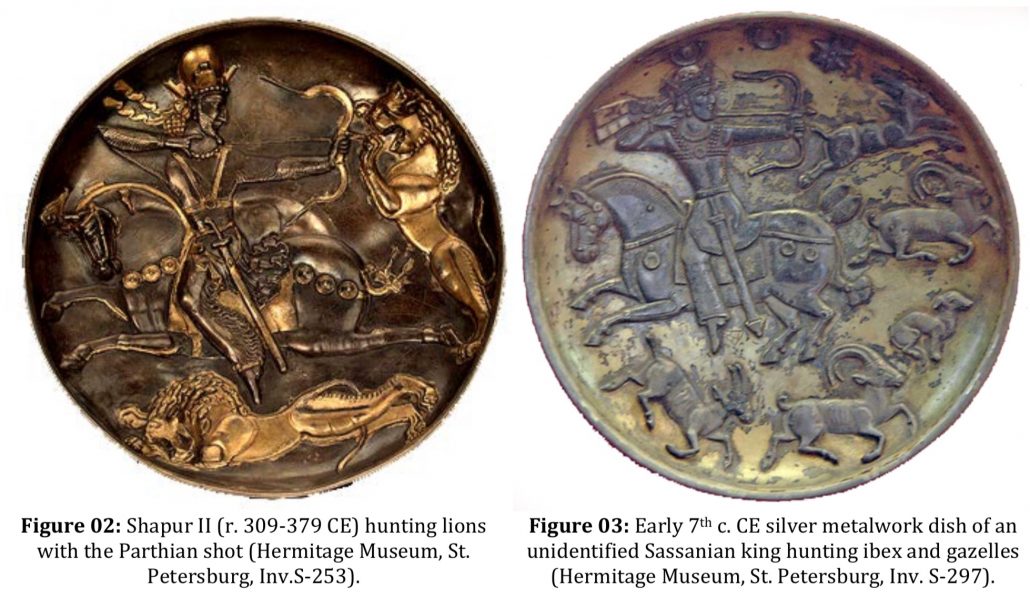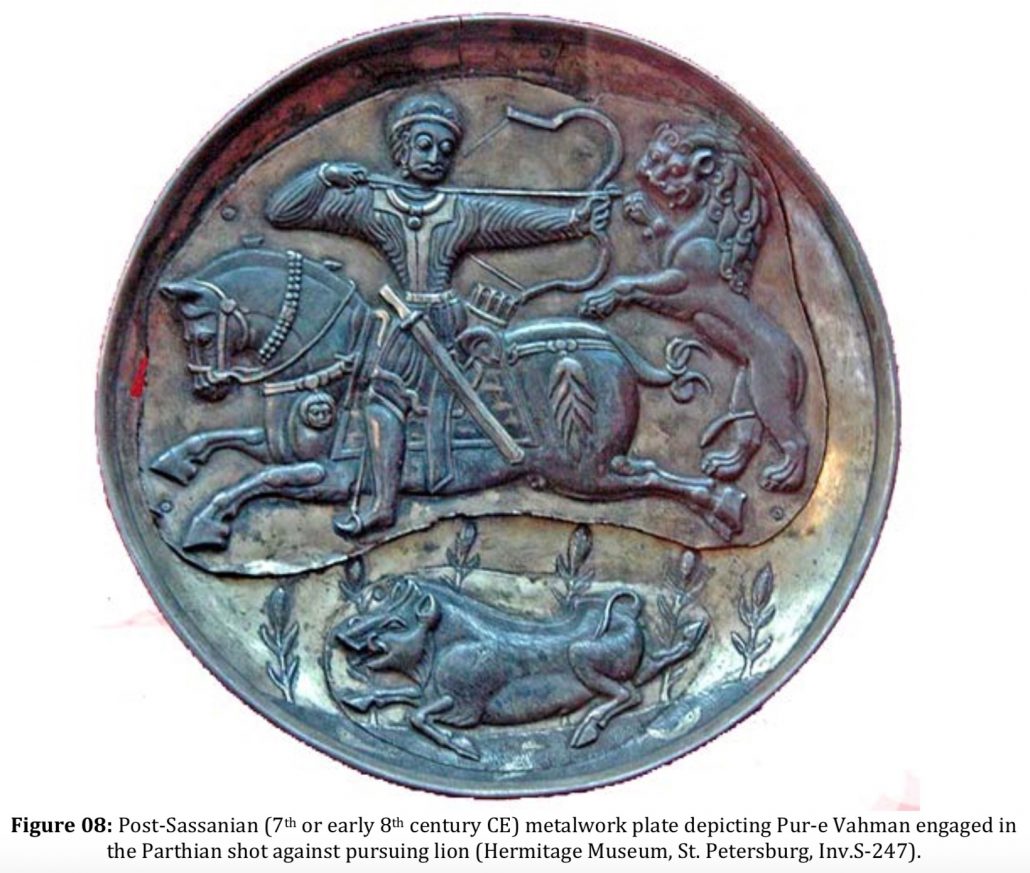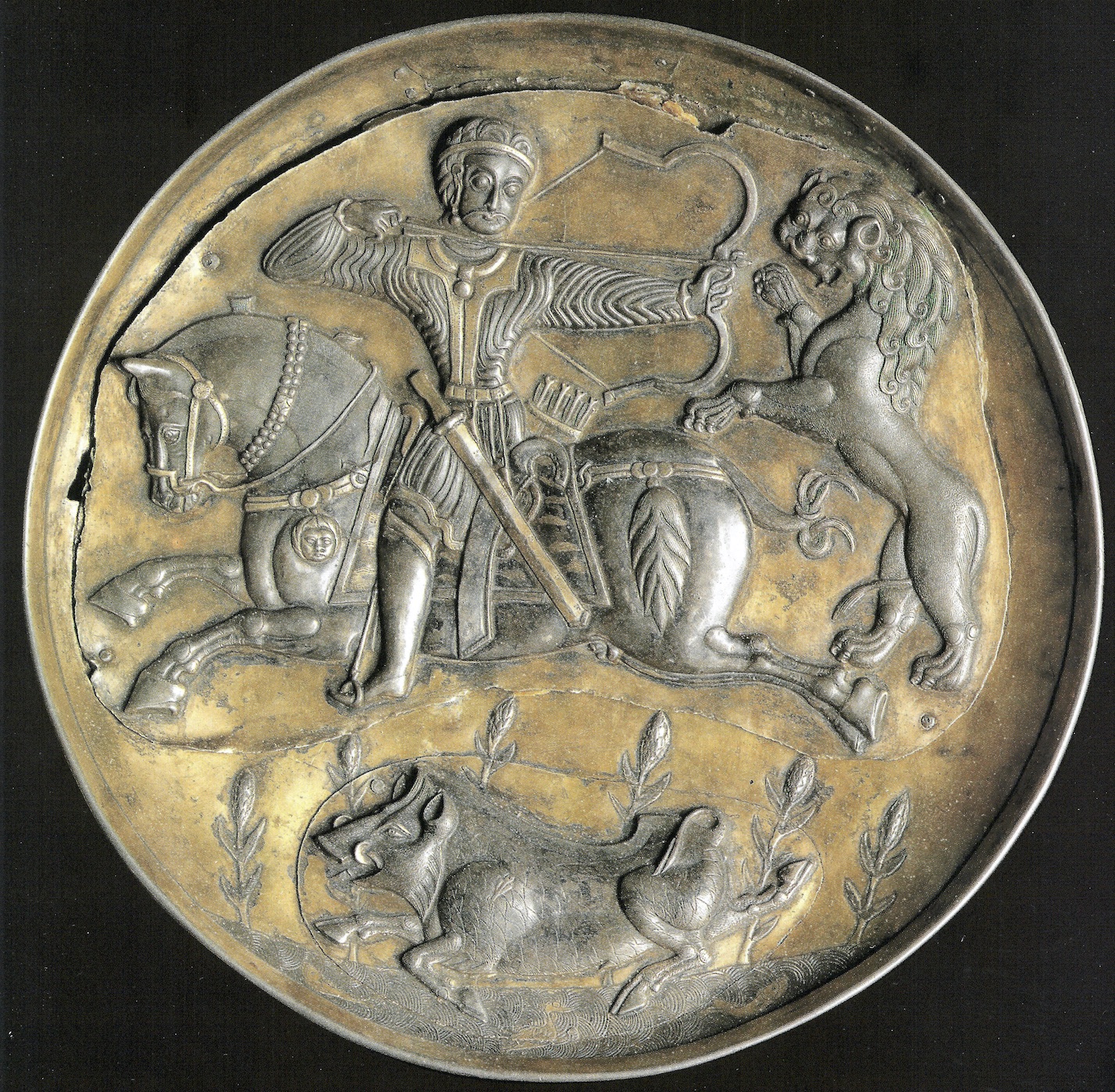The prestigious and academically peer-reviewed military journal, RAMA (Revista de Artes Marciales Asiáticas) has published the following article by Kaveh Farrokh, Manouchehr M. Khorasani and Bede Dwyer (click link below to download from Academia.edu):
This article provides a detailed and academic examination of the key facets of Sassanian foot and mounted archery The abstract of the article is as follows:
“This article provides an examination of archery techniques, such as drawing techniques of the bowstring, the method of grasping the bow grip and placing the arrow, and their relationship to warfare as depicted on 22 Sassanian and early post-Sassanian silver plates. These plates provide useful information on Sassanian archery equipment and techniques. These plates can be categorized into the following categories: (a) foot archery, (b) horse archery, c) dromedary archery and (d) elephant archery. All plates examined in this study depicting these categories are in a hunting milieu. The largest proportion of plates pertain to horse archery which in turn can be classified into four combat subsets: forward-facing horse archery, the backward-firing Parthian shot, horse archery with stirrups, and horse archery while appearing to ride backwards.”
The study of Sassanian archery has become one of the primary domains of Sassanian military studies. The RAMA publication has focused on a detailed analysis of Sassanian metalwork plates depicting archery:

As noted in page 86, the skill of the ancient archers has been noted by Classical sources:
“Archery was a highly valued combat arm in the armies of ancient Iran with its seminal role praised in adeptness in the Tir-Yasht (Khordeh Avesta, 1936) and Menog e Xrad (1913). Ancient Iranian adeptness in archery skills has been cited by Classical sources such as Herodotus (1972, I, p. 136), Strabo (1960) and Procopius of Caesarea (1914, I, p. 18). As noted by Ammianus Marcellinus (1996, XV, I, p. 13), Iranian archery was an “… art that nation has always been most skillful from the cradle” “.





